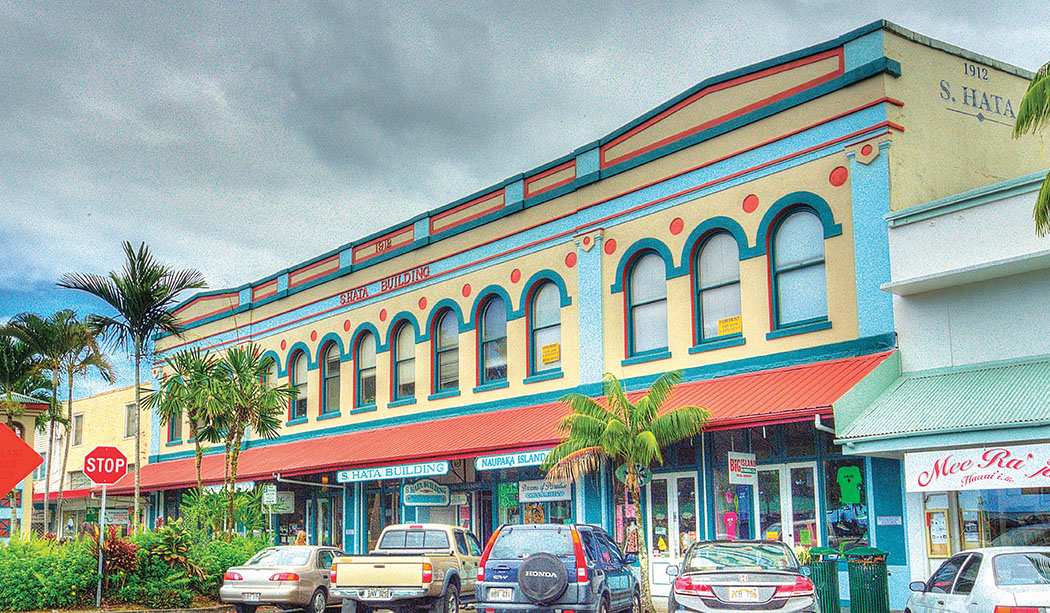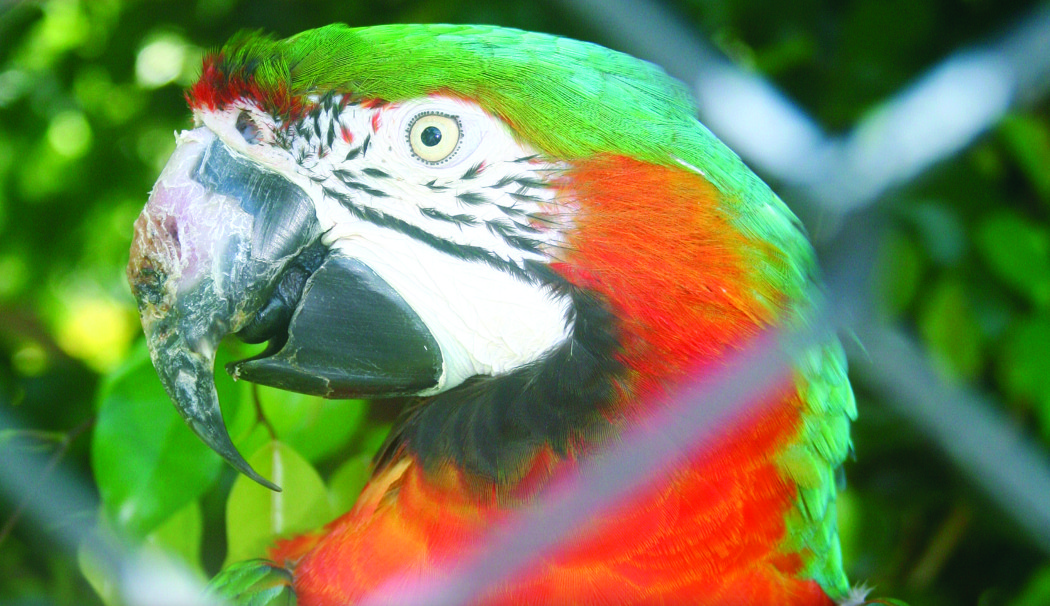
Hale Ohia Cottages’ Hidden Charms: Volcano Cottages Celebrate 25th Anniversary

By Alan D. McNarie

Nestled among a grove of sugi pine trees, a mile or two from the entrance to Hawai‘i Volcanoes National Park, is a unique lodging experience—or rather, twelve experiences.
It all began with a large residence, a gardener’s cottage and various other rustic structures dating back to the 1920s and 1930s. “James Johnston, the manager of Ola‘a sugar plantation, bought it and built Hale Ohia”, explains Mike Tuttle, who bought the property 25 years ago. “He owned it for ten years, then sold it to Hawaiian Dredging. This was their corporate retreat for around 40 years.”
Hawaiian Dredging Construction Co. is the state’s oldest and probably best-known general service building contractor. Responsible for the construction of everything from the Ala Wai Canal to much of Pearl Harbor’s facilities to Ala Moana Center, its founder, Walter Dillingham, was known as “The Baron of Hawai‘i.”
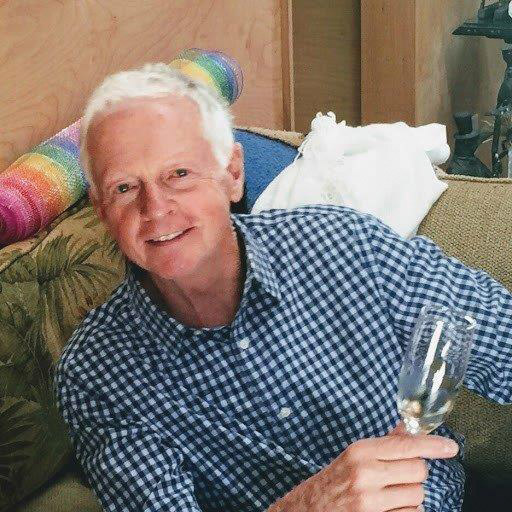
The company’s charming little rustic retreat in Volcano, however, was known to almost no one; when Mike moved there in 1992, he met people in Volcano who had never known it existed. In fact, even Volcano itself was not that well known, despite having a national park and a volcano on its doorstep. When people thought of a Hawaiian vacation, they thought ocean.
“When I first started, very broke, I would drive around to the hotels and pass out brochures on Hale Ohia, and found people on the island who had never been to Volcano. People who grew up here—they’d never been in Volcano!” Mike muses.
Mike first came to the islands on vacation in 1983. “I kept coming every winter, and ended up moving, first to Lanikai on O‘ahu in 1987,” he recounts. “I loved it. Somehow I connected with Hawai‘i.” Originally, he says, he was looking to settle on O‘ahu, but one day his Realtor told him, “Mike, you’ve gotta see this.” ‘This’ was a historic property in Volcano that originally had been called ‘Uluwena (Hidden Place).
Adaptation
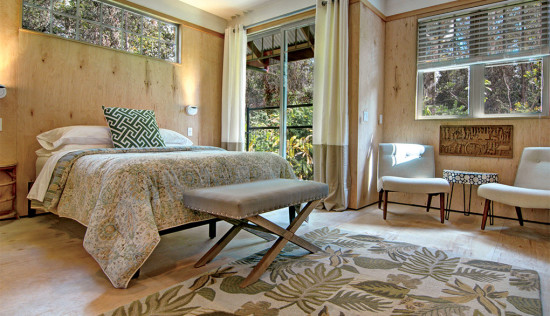
Mike has a degree in architecture, though when he mentions that, he adds, “I’ve never practiced except for family, friends, and myself.” Hale Ohia Cottages is his masterwork, and not just architecturally; it is a total aesthetic experience, a complimentary blending of nature, architecture, history and hospitality. Mike was born in Kentucky, where he renovated several historic properties, dabbled in real estate and construction, and made a detour into the food service industry, becoming a restaurant owner and a private chef, which led him to being a Food Director in a retirement community.
Over the years, Mike has renovated the old retreat buildings and added new ones that complemented them (the newest had its blessing ceremony early this year) while learning to adapt their architecture to the rainforest. The cottages tend to be light and airy, lacking closets and cabinets, for example, because enclosed, dark spaces breed mildew in the forest’s humidity. Meanwhile, Mike has slowly built the retreat’s reputation for a quality experience. He found a ready translation for the Southern hospitality of his home state in the local concept of aloha, and trained his staff to practice it. “I’m old enough, I’m 65, and I think I’m smart enough to know that the staff does it better than I do,” he says. “I train them well.”
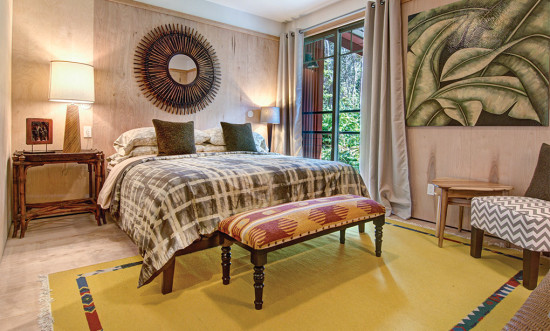
Many resorts offer continental breakfasts during certain hours in the morning. Instead, at Hale Ohia, lodgers have their breakfast packed in the cottage refrigerator the night before, so they can “break their fast” at their leisure. The bread is baked fresh on site and the fruit is grown locally: papayas, apple bananas, starfruit, tree-ripened mangoes, vine-ripened local melons, and Waimea strawberries in season.
The cottages have successfully competed with the big resorts and have managed to weather bad times such as the Great Recession—though “during the recession, we were down to bare bones,” Mike admits—while simultaneously adapting to rapidly changing technology in the hotel industry. “I had a website before the Hilton Waikoloa had a website,” Mike chuckles. He’s learned to take advantage of online travel agencies such as Expedia, Kayak and Orbitz, and the staff has garnered so many glowing reviews on TripAdvisor that the site has awarded Hale Ohia Cottages its Certificate of Excellence. The occasional bad review—one guest recently complained about a noisy dehumidifier, for instance—are way overbalanced by the positive ones.
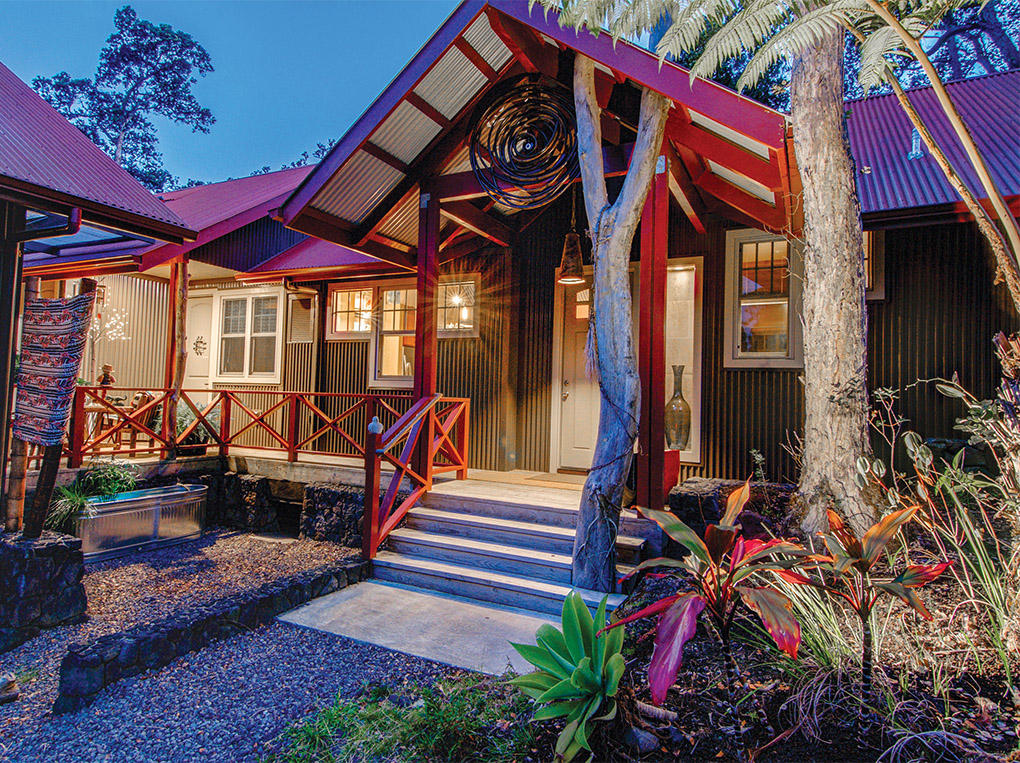
The Cottages

Each of Hale Ohia’s twelve cottages and suites are one of a kind. Ihilani Cottage, for instance, was built in the 1920s and features leaded glass windows and skylight, a redwood bedroom shaped like half an octagon, a fireplace and a cozy reading alcove. The Camellia Suite has a sitting room graced by a four-panel oriental-style painting of cherry blossoms. Iiwi, named after a native forest bird, is a two-story former gardener’s cottage with rustic wood shake-covered outer walls. Perhaps most unique of all, the cottage known simply as #44, has a bedroom fashioned out of a remodeled 77-year-old redwood water catchment tank.
Each cottage and suite has its own floor plan, furnishings and artwork; even the bathroom fixtures vary. They are a balanced mix of Victorian tradition and imagination, of modern comfort and unique aesthetics. They feature varied amenities: #44, the one built around the repurposed redwood water tank, fittingly sports a Jacuzzi; others have heated floors, an appropriate luxury in Volcano’s cool high altitude climate. Each cottage has a small library of books and some have high-speed Internet, however, none have televisions—this not a place where you go to watch TV. Some of the decor has a charming quirkiness, like a queen bed that looks like it is wearing a grass hula skirt, or a bathroom that features not one large mirror but a dozen small oval ones. Other furnishings are genuine antiques and somehow they all work together. “The style—it’s curious. It’s not Victorian. It’s kind of Victorian California bungalow-ish. You go inside and you see all those little leaded paned windows, like late 1800s, but it was built in the 1930s.” muses Mike, who continues greeting his guests, even after 25 years.
The cottages have attracted their share of celebrities—not necessarily the glitz-and-glamor crowd, but people of accomplishment. Bob Ballard, the discoverer of the Titanic’s wreck, stayed here for a month. Renowned poet W.S. Merwin has been a frequent guest. Musician Henry Kapono has come here to write.
Volcano Village
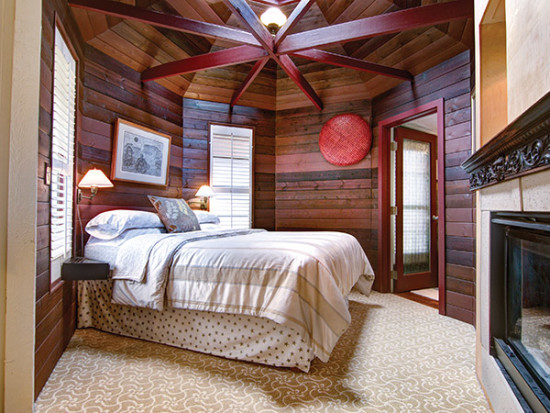
Over the years, Volcano itself, like Hale Ohia, has managed to change and still keep its essence. Following in the footsteps of pioneers like Hale Ohia, the village now has a host of small family-owned lodges and bed and breakfasts, all tucked away in the forest where you have to have directions to find them, with no large corporate hotels. The Village has been held up as a model of how a gateway town for a national park should be developed: by accommodating large numbers of visitors while keeping the character of a place.
Sometimes, the best way to build a business is to hide in the woods. ❖
For more information: haleohia.com
All photos courtesy of Hale Ohia Cottages
